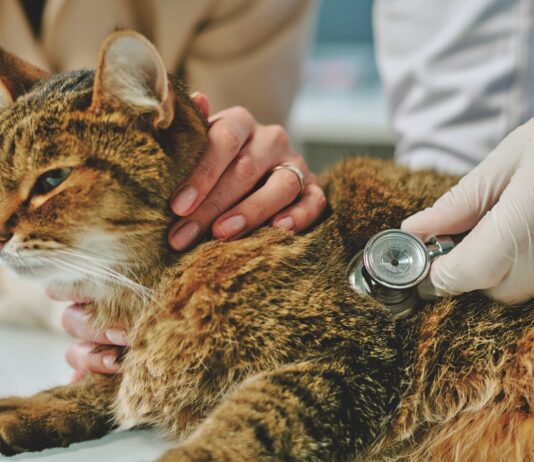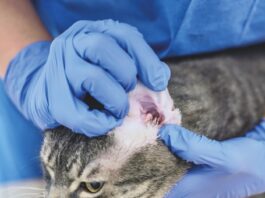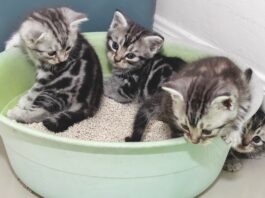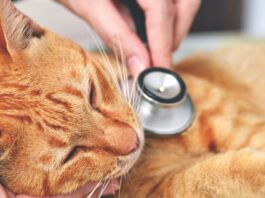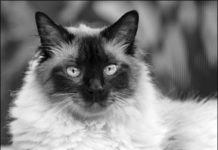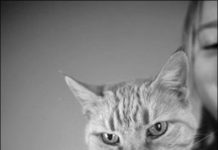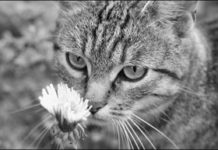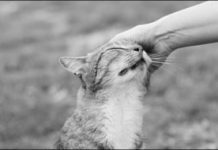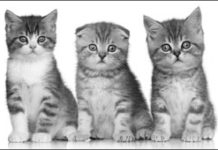What to Expect Pre- and Post-Surgery
Chances are that your cat will face a surgical procedure at least once during his lifetime if he hasn’t already. Happily, the nature of veterinary surgery is changing, which may mean that your cat’s next encounter could differ considerably.
How to Avoid Those Sharp Feline Bites
Cat bites don’t get as much media coverage — or as much scientific attention — as dog bites because they tend to occur inside the home. Moreover, people mistakenly assume that, because cats are small, they can’t do much damage. In fact, puncture wounds made by sharp feline teeth are not only painful, they can lead to serious infections. It’s important to learn how to avoid them. Although cats sometimes appear to attack out of the blue, they always have their reasons, says Katherine A. Houpt, VMD, Ph.D., emeritus professor at the Cornell University College of Veterinary Medicine and diplomate of the American College of Veterinary Behaviorists. “Fear, predatory aggression, and pain top the list.
Cats With Diabetes Mellitus Have Fair to Good Prognosis
The results of studies on the life expectancy of cats with diabetes mellitus have varied widely. Now research among several European veterinary colleges, including the University of Zurich, has found cats with the disease have fair to good prospects for survival. The retrospective study of 114 cases, reported in the Journal of the American Veterinary Association, showed the median survival time of cats newly diagnosed with the disease was one year and 46 days, while 70 percent lived longer than three months, 64 percent lived longer than six months and 46 percent lived two years.
Short Takes: September 2013
The sad truth about cats’ access to veterinary care in the U.S.: They don’t have much. Surveys show that nearly twice as many dogs visit the veterinarian as cats, even though the cats outnumber dogs — 86 million versus 78 million. Thirty-nine percent of owners say they would take their cat to the veterinarian only in the event of illness; and 60 percent report that their cat hates going to the veterinary clinic. The visits may stress both owners and cats, says the American Association of Feline Practitioners. To offer a more calming, encouraging environment, it has launched an initiative to improve cats’ treatment, handling and overall health.
Quick Action at Home Can Stop the Growth of Hot Spots
Within hours, you notice that your cat has developed a red, raw, damp, hairless spot and it’s spreading. It looks like a scrape you’d get falling off your bike. The likely diagnosis: a hot spot. Cats with underlying skin diseases — usually allergies — are candidates for quickly developing hot-spot-type lesions, says dermatologist William H. Miller, VMD, Medical Director of the Companion Animal Hospital at the Cornell University College of Veterinary Medicine. Allergic animals feel itchy but may focus on a particular spot as they lick, rub, scratch, and bite, and in the process can pull out fur. The bare patch can quickly grow in size. What to do?
The Team Approach to Success
Steffi Loomis awoke in the middle of the night to the sound of painful meows from Dave, her normally mellow 16-year-old female cat with a male name. When Loomis turned on the light, she discovered bloody diarrhea and vomiting and her orange tabby getting weaker and sicker by the minute. Loomis, who lives in New Canaan, Conn., contacted the veterinarian, who advised her to take Dave immediately to Cornell University Veterinary Specialists in nearby Stamford, Conn. CUVS, the largest university-affiliated veterinary referral service in the country, has been referred to as the Mayo Clinic of veterinary medicine. Loomis rushed Dave there, and a team of specialists quickly worked to save her life.
When a Marauding Bee Strikes
Cats, even those who live strictly indoors, are never completely safe from venomous insects. All it takes is a wayward bee or wasp to slip through an open door or window and catch your cat’s attention. His innate prey drive can kick into gear as he leaps and tries to swat and eat the flying insect. In reaction, the bee delivers a painful sting. “Most bee or wasp stings occur on a cat’s front paw or face,” says Elisa Mazzaferro, DVM, Ph.D., who specializes in emergency and critical care at the Cornell University Veterinary Specialists Center in Stamford, Conn.
A Single Gene Keeps Mice Away From Cats
A specific gene affecting a mouse’s sense of smell helps it avoid predatory cats, according to research at Northwestern University. Neurobiologist Thomas Bozza, Ph.D., and his team found that removing an olfactory receptor responsible for detecting certain odors can impact a mouse’s survival. The gene, TAAR4, controls production of a receptor that detects a substance concentrated in carnivores’ urine. Usually, mice avoid the scent marks of predators, but those lacking the TAAR4 gene do not — and can end up as prey.
Geography Ranks Tops in Longevity
A study based on 460,000 cats treated at Banfield Pet Hospitals last year suggests that geographic location influences longevity. Cats live longest in Montana, Colorado, Rhode Island, Illinois and Nebraska, according to Banfield’s third annual State of Pet Health Report. Cats have shorter lifespans in Delaware, Ohio, Louisiana, Kentucky and Mississippi.
A Simple Way to Check the Ears
Hearing is one of a cat’s most important senses. Keeping the ears healthy can help prevent painful infections from developing — chronic infections that could damage the ear canal or eardrum and lead to deafness. Checking the condition of your cat’s ears is as simple as stroking them, says dermatologist William H. Miller, VMD, Medical Director of the Companion Animal Hospital at the Cornell University College of Veterinary Medicine. As you rub the ears, you can easily notice if your cat shows signs of discomfort or extreme pleasure. Both instances are a clue that closer inspection is necessary.
Life-saving Steps to Stop Bleeding
If your cat steps on broken glass, catches his dew claw in the carpet or has his ear bitten in a catfight, expect blood to flow. Witnessing any of these scenarios can be jarring, but at times like these you need to know the steps to slow or stop the bleeding and take your cat to the nearest veterinary clinic. You have an emergency on your hands.“A laceration of a large artery or vein could lead to life-threatening bleeding in minutes,” says Daniel J. Fletcher, DVM, Ph.D., Assistant Professor of emergency and critical care at the Cornell University College of Veterinary Medicine.
Pursuing a Cure for Breast Cancer
Eighty to 90 percent of mammary tumors in cats are cancerous and can spread as rapidly as aggressive breast cancer does in humans. Researchers at the Cornell University College of Veterinary Medicine are hoping to improve treatment of mammary adenocarcinomas, with the long-term goal of a cure. Their pioneering focus: the role of stem cells in the disease. Gerlinde Van de Walle, DVM, Ph.D., Assistant Professor of viral pathogenesis and stem cell biology at Cornell’s Baker Institute for Animal Health, is working to identify adult mammary stem cells (MaSC) in both healthy and malignant feline and canine mammary gland tissues.

